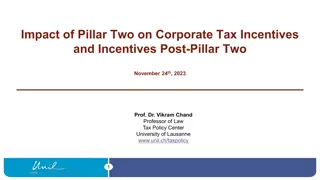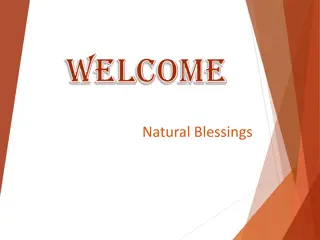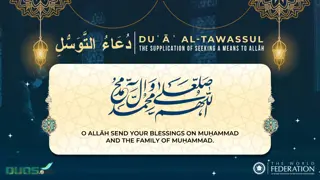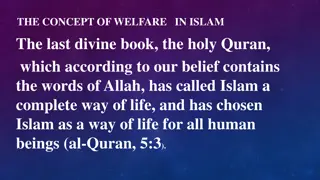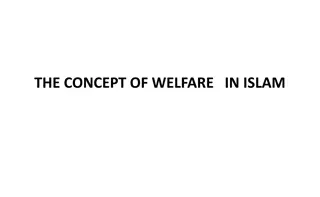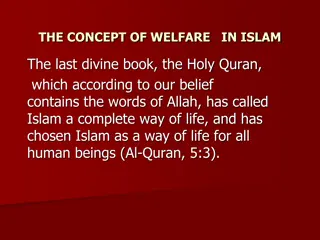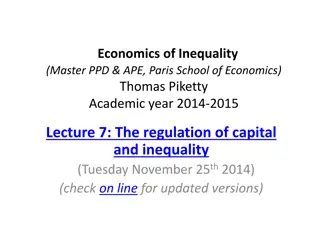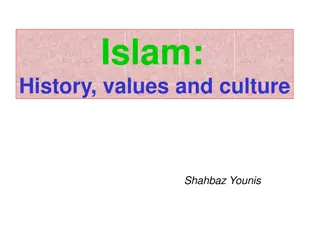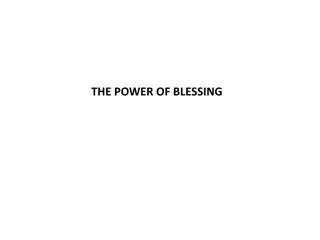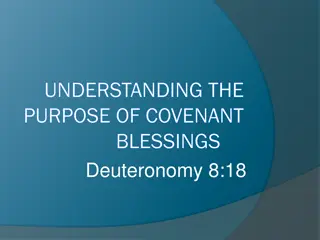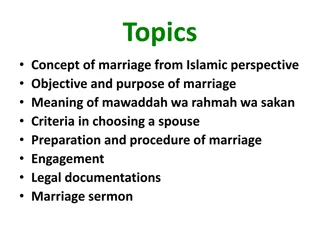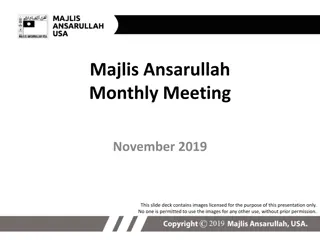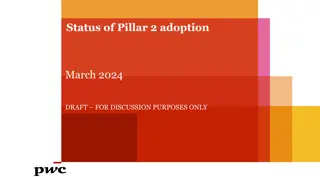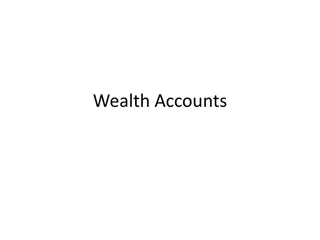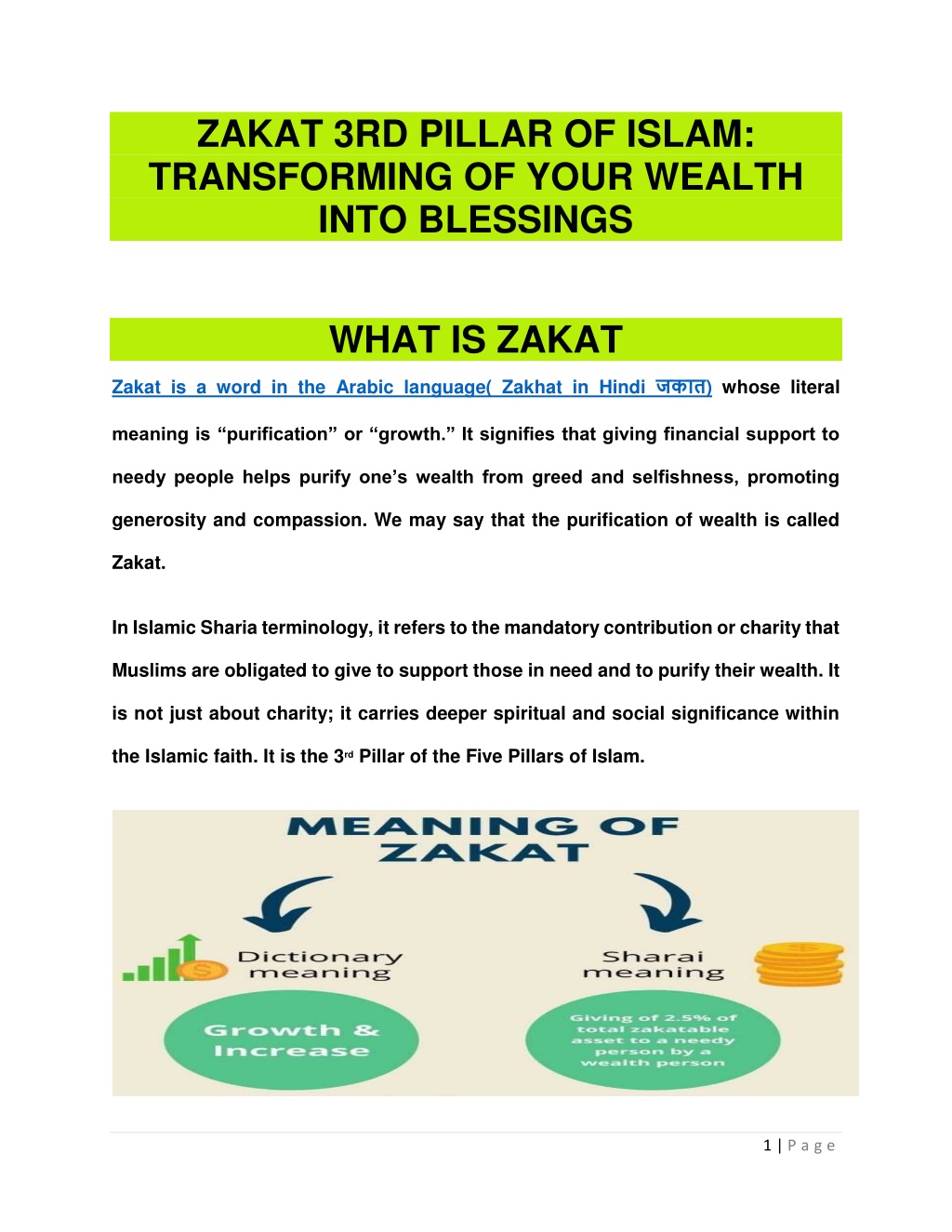
ZAKAT 3RD PILLAR OF ISLAM: TRANSFORMING OF YOUR WEALTH INTO BLESSINGS
//seribangash.com/nis a word in the Arabic language( Zakhat in Hindi u091cu0915u093eu0924) whose literal meaning is u201cpurificationu201d or u201cgrowth.u201d It signifies that giving financial support to needy people helps purify oneu2
Download Presentation

Please find below an Image/Link to download the presentation.
The content on the website is provided AS IS for your information and personal use only. It may not be sold, licensed, or shared on other websites without obtaining consent from the author. Download presentation by click this link. If you encounter any issues during the download, it is possible that the publisher has removed the file from their server.
E N D
Presentation Transcript
ZAKAT 3RD PILLAR OF ISLAM: TRANSFORMING OF YOUR WEALTH INTO BLESSINGS WHAT IS ZAKAT Zakat is a word in the Arabic language( Zakhat in Hindi ) whose literal meaning is purification or growth. It signifies that giving financial support to needy people helps purify one s wealth from greed and selfishness, promoting generosity and compassion. We may say that the purification of wealth is called Zakat. In Islamic Sharia terminology, it refers to the mandatory contribution or charity that Muslims are obligated to give to support those in need and to purify their wealth. It is not just about charity; it carries deeper spiritual and social significance within the Islamic faith. It is the 3rd Pillar of the Five Pillars of Islam. 1 | P a g e
ZAKAT CALCULATOR HISTORY OF ZAKAT The concept of Zakat has its roots in early Islamic history. It was established by the Prophet Muhammad as a fundamental pillar of Islam, along with other pillars like prayer, fasting, and pilgrimage. The Quran, the Holy Book of Islam, mentions it numerous times, emphasizing its importance in the lives of Muslims. The history of it can be traced back to the time of the Prophet Muhammad, who implemented it as a means of social welfare and economic justice in the nascent Muslim community in 7th century Arabia. Initially, it was primarily collected in the form of agricultural produce, livestock, and other tangible assets. Over time, as Muslim societies evolved and expanded, Zakat came to encompass various forms of wealth, including currency, gold, and silver. During the early Islamic caliphates, this third pillar played a central role in financing public infrastructure, social services, and charitable initiatives. It was collected and administered by the state, which distributed the funds to various beneficiaries, including the poor, orphans, widows, and those in need. TYPES OF ZAKAT Zakat al-Mal: This type is based on wealth and is a mandatory charity act that forms one of the five pillars of Islam. It is a way for Muslims to purify their wealth and fulfill their social responsibility by contributing to the well-being of the less fortunate. 2 | P a g e
This applies to various assets like money, gold, silver, livestock, and business inventory, each with specific requirements and calculations for determining the amount due. This type is crucial in promoting social justice and fostering compassion within Muslim communities by creating a regular flow of resources toward those in need. Zakat al-Fitr: Zakat breaking the fast, is a unique form of charity specifically given at the end of Ramadan, the Holy month of fasting. This mandatory act is a way for Muslims to celebrate the completion of Ramadan and share their blessings with those less fortunate. Unlike Zakat al-Mal, which requires specific calculations based on wealth, the latter has a fixed amount, typically the equivalent of 2.5 kg or 3.5 liters of staple food like rice, wheat, or dates. This ensures that everyone, regardless of their financial situation, can participate in this act of charity and contribute to the spirit of Eid al- Fitr, fostering community solidarity and compassion. METHOD OF DISTRIBUTING ZAKAT Direct Distribution: This method involves giving Zakat directly to eligible recipients. Donors may personally identify individuals or families in need within their communities and provide them with funds or goods. Zakat Committees: Many communities establish different committees or organizations responsible for collecting and distributing said funds. These 3 | P a g e
committees verify the eligibility of recipients and allocate amounts based on their needs. Social Welfare Programs: Zakat funds may be channeled into social welfare programs administered by governments, non-profit organizations, or charitable foundations. These programs aim to address poverty, hunger, healthcare, education, and other basic needs of eligible beneficiaries. Microfinance and Entrepreneurship: Some Zakat funds are used to provide interest-free loans or grants to empower individuals to start small businesses or income-generating projects. This approach aims to promote self-sufficiency and economic empowerment among recipients. Debt Relief: Zakat can be used to help individuals or families burdened by debt. It may involve paying off debts directly or providing financial assistance to alleviate the financial strain caused by loans or outstanding obligations. Emergency Relief: Zakat funds may be allocated for providing emergency relief to communities affected by natural disasters, conflicts, or humanitarian crises. This includes providing food, shelter, medical aid, and other essential support to affected populations. Educational Support: This fund can be utilized to support educational initiatives, such as scholarships, tuition assistance, or school supplies, enabling underprivileged individuals to access education and improve their livelihoods. 4 | P a g e
WHO IS SUBJECT TO PAY ZAKAT Muslim: It is obligatory on every adult Muslim male and female. Non-Muslims are not required to pay. Free adult: Individuals who are enslaved or under guardianship (minors, mentally incapacitated) are not required to pay Zakat. Financial stability: A person who is a Nisab holder and the property (reaching the value of Nisab) upon which they are going to pay Zakat remains in their possession for one year or more. One lunar year of ownership: The wealth must have been owned for a full lunar year (approximately 354 days) to be considered eligible. 5 | P a g e
TO WHOM CAN ZAKAT BE GIVEN 1. Faqir, Faqiris a person who has some wealth, but not enough to reach the nisab. 2. Poor, a poor person is a person who has nothing, even for food and shelter; he is in need of asking people. 3. Aamal, Aamal is one who is appointed by the King of Islam to receive Zakat and Ushar, he can also be given. (But nowadays it is obsolete due to the lack of an Islamic government). 4. Riqab means freeing the neck from slavery, but now there are no slaves and it is not time to spend this money in this regard. 5. Gharam, Gharam means indebtedness; that is, he has so much debt that there is no balance left after paying it off. 6. Fai sabil Allah, Fa sabil Allah means spending in the way of God; it has several forms: For example, a Mujahid wants to go for Jihad, but he does not have a ride, Zadrah, weapons, etc. Zakat money can be given. If someone wants to go for Hajj and does not have wealth, he can be given an amount from this fund, but it is not permissible to ask him for Hajj. 7. Ibn al-Sabil, Ibn al-Sabil refers to a traveler; if the traveler runs out of wealth, he can also be given the amount of zakat even though he has wealth in his own 6 | P a g e
country or as a student. If he wants to study knowledge and religion, he can also give an amount of funds which is also to be given in the way of God. TO WHOM ZAKAT CANNOT BE GIVEN Family: You can t give Zakat, Fitrana, or Ushar to your family like parents, grandparents, children, or grandchildren. Husband: Husbands can t give Zakat, Fitrana, or Ushar to their wives. Rich People: You shouldn t give that amount to rich people or Sayyids. Non-Muslim: And definitely not to someone who doesn t believe in your faith. HOW ZAKAT IS CALCULATED Identify all your assets: This includes cash, bank savings, investments, property (excluding your primary residence), and business inventory exceeding operational needs. Deduct any liabilities: Subtract any debts you owe, such as mortgages, personal loans, and outstanding business expenses. Set aside any exempt items: Exclude personal belongings, tools of your trade, and your primary residence from the calculation. Nisab threshold: Once you have your total net eligible wealth, compare it to the Nisab threshold, which is currently equivalent to the value of 87.48 grams (3 ounces) of gold. 7 | P a g e
WHAT IS THE VALUE OF ZAKAT It doesn t have a fixed value: It is not a pre-determined or fixed amount. Instead, it s a percentage applied to the excess wealth (above a specific threshold) that a Muslim individual possesses. This percentage is a standard 2.5% of the eligible assets. Nisab Threshold, Not a Fixed Value: The value of Zakat, being equivalent to 7.5 tolas (approximately 87.45 grams) of gold or 52.5 tolas (approximately 611.55 grams) of silver, refers to the Nisab threshold. This threshold defines the minimum amount of wealth a Muslim must possess before it becomes obligatory. 8 | P a g e
ZAKAT OBLIGATORY ITEMS AND ITS RATE Gold: It is important whether the gold is kept as a saving or in use. In both cases, it is obligatory (Sunan Abi Dawud, Kitab al-Zakat wa Hakim, Part 1, page 390, Fateh al-Bari, Part 4, page 13). Silver: Zakat shall be paid on silver when it is of a weight equal to fifty-two and a- half tolas (Ibn Majah 612). Zakat on the produce of land: On artificially irrigated land, one-twentieth must be paid, while on naturally irrigated land, the rate of it is one-tenth (Bukhari s Kitab al- Zakah). People with agricultural production, wheat, corn, rice, millet. Millet. Ushar, which is the twentieth part will be taken from potatoes, sunflowers, cotton, sugarcane, etc. Details of Zakat on animals. Regarding animals, it is important to know that if the following animals are Saimaa, then Zakat is obligatory on them. Saimah are the animals that spend most of the year grazing; the purpose is to increase their breed, hobby, or fattening, but if the purpose is to carry loads, ride, or plow, then even if the animal grazes, it is not obligatory to pay. The camel One goat for every five camels and two goats for ten camels. It is not obligatory on less than five camels. Buffalo and cow 9 | P a g e
One goat is Zakat on thirty cows and one calf older than two years is on forty cows. (Tirmidhi 1/509). The rate of Zakat on cows will also be applicable on buffaloes. From 40 to 120 goats, one goat is Zakat. Two goats from 121 to 200; three goats from 201 to 300; four from 301 to 400 and then one for every hundred. If the number of grazing goats is less than 40, it is not obligatory on them. 10 | P a g e
ZAKAT ON RENTED HOUSE There is no zakat on a rented house, but if it has been a year since the rent has been collected and the amount exceeds the nisab, then it becomes obligatory at the rate of two and a half percent. If the money is spent before the end of the year, amount will not be due. 11 | P a g e
ZAKAT ON VEHICLES There is no zakat on rented vehicles, but if the accumulated rent is over a period of one year and the amount reaches the nisab, then it is obligatory. The rate will be two and a half percent. It is worth noting that it is not obligatory on household vehicles, animals, and weapons. 12 | P a g e
ZAKAT ON MERCHANDISE Purification of wealth is obligatory in any kind of shop, business, or business, provided that a year has passed on it and it has reached the Nisab. What is noteworthy about this is that after accounting for all the assets of the shop or business, give Zakat on the fortieth part of it. It is not applicable to the income of the shop which is spent at the same time. 13 | P a g e
ZAKAT ON AGRICULTURAL LAND It is not directly payable on the land itself; it applies to the agricultural produce generated from it. Here s a breakdown: Nisab: A minimum threshold is required before said amount becomes obligatory. For crops, it s typically five Wasqs (approximately 900 kg). method: Irrigation: The Zakat rate depends on the irrigation oRain-fed or naturally irrigated: 10% of the harvest s gross value. oMan-made irrigation (wells, canals): 5% of the harvest s net value (after deducting expenses). Timing: It is due when the harvest is complete and separated from the land. 14 | P a g e
PLOT OR AREA OF LAND The concept of 3rd pillar paying amount and its application to land ownership can be nuanced, and the distinction between land for investment/profit and land for personal use is crucial. Land for Investment/Profit: If you own land with the intention of selling it for profit at a future date, this land is considered eligible. It applies to the estimated market value of the land at the time of your Zakat assessment. You are not required to pay it on the initial purchase price of the land, but only on its current value. Land for Personal Use: Land that you own and use for personal purposes (e.g., your primary residence; agricultural land you cultivate yourself) is exempted. This exemption applies because the land is not intended to generate profit and is directly used for your personal needs and well-being. 15 | P a g e
BENEFITS OF ZAKAT Spiritual growth: Fulfilling the obligatory act of third pillar of islam is seen as a way to purify one s wealth and soul, bringing them closer to God. Increased blessings: Many Muslims believe that giving the said donation can bring blessings and rewards in this life and the hereafter. Selfless act: It encourages individuals to think beyond themselves and their immediate needs, fostering compassion and generosity. Reduced poverty and inequality: By redistributing wealth to those in need, it helps bridge the gap between the rich and the poor, contributing to a more equitable society. 16 | P a g e
Enhanced social cohesion: Zakat fosters a sense of community and responsibility, encouraging individuals to help each other and creating stronger social bonds. Empowerment for the underprivileged: It provides individuals and families with resources to meet their basic needs and improve their lives, allowing them to contribute more effectively to society. Economic development: This funds can be used to support various initiatives like education, healthcare, and infrastructure development, contributing to the overall economic growth of a community. ZAKAT OR DONATIONS IN OTHER RELIGIONS JUDAISM Maaser: This term translates to tithe and refers to the practice of donating a tenth of one s agricultural produce to charity. Additionally, there are other forms of charitable giving encouraged in Jewish tradition, like Tzedakah (righteous giving) and Bikkurim (firstfruits). CHRISTIANITY Tithing: Similar to Maaser, tithing refers to the practice of donating 10% of one s income to the church or other charitable causes. While not universally mandatory 17 | P a g e
in all Christian denominations, tithing is still a prevalent practice and considered an important act of faith for many Christians. HINDUISM Dana: The Sanskrit word Dana translates to giving and encompasses various forms of charitable acts, including: Daana of wealth: Donating money, food, clothes, or other resources to those in need. Daana of knowledge: Sharing knowledge, skills, and wisdom to help others learn and grow. Daana of service: Volunteering your time and effort to serve others without expecting anything in return. DISCLAIMER The aim of writing is to highlight a generic concept of Sunni clergy (school of thought) regarding the goods/items which is subject matter of Zakat. It has nothing to do with any sectarian differences or opposition. These items may vary in number or ratio according to the school of thought one follows. CONCLUSION In conclusion, Zakat plays a vital role in the Islamic faith, representing the third pillar of Islam and emphasizing the importance of charity and community support. Understanding the different types of Zakat, such as Zakat fitrah and Zakat-e-mal, is essential for fulfilling one s religious 18 | P a g e
obligations. Many people wonder about the Zakat percentage required, which can vary based on individual circumstances. Organizations like the Zakat foundation are crucial in helping individuals calculate and distribute their Zakat effectively. It s important to note that Zakat on property, Zakat on gold, and Zakat on agricultural property all have specific guidelines that should be followed to ensure compliance with Islamic teachings. Additionally, exploring Zakat in other religions can provide valuable insights into the broader concept of charity and giving. As we approach Zakat in 2024, it remains a powerful tool for social justice and poverty alleviation. By embracing these practices, individuals can contribute to their communities and fulfill their spiritual duties with sincerity and commitment. For more Blogs please visit: https://seribangash.com/ https://seribangash.com/t-shirt-printing-machine-is-profitable-business/ https://seribangash.com/car-decoration-business-start-profitable-venture/ https://seribangash.com/vape-business-manufacturing-electronic- cigarettes/ https://seribangash.com/zakat-purification-of-wealth-in-islam/ 19 | P a g e

